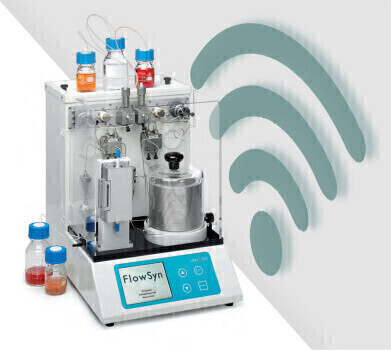-
 FlowSyn integrated continuous flow reactor ™. (courtesy – Uniqsis Ltd)
FlowSyn integrated continuous flow reactor ™. (courtesy – Uniqsis Ltd)
Laboratory Products
Optimising Heterogeneous Catalysis Reactions
May 17 2023
Uniqsis is at the forefront of flow reactor design, offering the cutting-edge FlowSyn™ system that sets the standard for automated optimisation of heterogeneous catalysis reactions. With FlowSyn™, researchers can achieve unparalleled control and efficiency in their heterogeneous catalysis processes, streamlining reaction optimisation for enhanced productivity and results.
Leveraging solid supported reagents, catalysts, and scavengers in flow reactor systems presents substantial advantages over traditional batch heterogeneous catalysis methods. This approach frequently eliminates the requirement for subsequent product purification, while also improving reaction rates and overall efficiency, thanks to the abundant catalyst excess utilised.
FlowSyn™ reactors have revolutionised continuous flow catalytic reactions, delivering notable time savings, exceptional reproducibility, and high selectivity. Notably, compared to batch reactors, FlowSyn™ reactors exhibit remarkable enhancements in catalyst stability. These advancements pave the way for more efficient and reliable catalytic processes in various applications.
FlowSyn™ is an all-in-one continuous flow reactor that excels in user-friendly, safe, and efficient operation. Crafted with highest quality components renowned for their exceptional chemical compatibility and reliability, FlowSyn reactors ensure precise and consistent temperature control of up to +260°C. Additionally, with the ability to handle reactions under pressures up to 1400 psi, FlowSyn becomes the ideal tool for exploring and evaluating novel catalysts, making it invaluable for catalyst development and testing purposes.
The FlowSyn™ system features integrated software with a user-friendly step-through interface, allowing seamless control of the entire system. Whether running catalysis reactions manually or programming them for automated unattended operation, the software offers flexibility and convenience. Once the reaction is complete, the system automatically flushes the flow path and column with clean solvent, preparing it for the next experiment without any manual intervention required.
More information online
Digital Edition
ILM 49.5 July
July 2024
Chromatography Articles - Understanding PFAS: Analysis and Implications Mass Spectrometry & Spectroscopy Articles - MS detection of Alzheimer’s blood-based biomarkers LIMS - Essent...
View all digital editions
Events
Jul 28 2024 San Diego, CA USA
Jul 30 2024 Jakarta, Indonesia
Jul 31 2024 Chengdu, China
ACS National Meeting - Fall 2024
Aug 18 2024 Denver, CO, USA
Aug 25 2024 Copenhagen, Denmark
-(1)-(1).jpg)


24_06.jpg)













